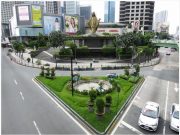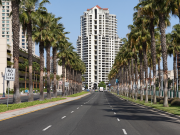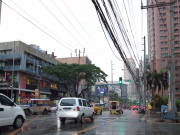Investing in senior-friendly real estate is gaining popularity among older adults in the Philippines. The concept of “aging in place,” staying in one’s own home as one ages, is increasingly appealing, offering the freedom to live comfortably and independently in familiar surroundings. Home modifications that cater to buyers of all ages not only enhance accessibility but also improve resale value.
As the senior population in the Philippines continues to grow, the real estate market is adapting to meet the needs of seniors with limited mobility or other age-related challenges. Homebuilders and real estate agents in the Philippines recognize this shift and now offer specialized services to help seniors make informed decisions about buying, selling, or modifying homes to support aging in place. Assistance from these experts can empower seniors to make the best choices for their future.
Navigating homes can become increasingly complex for older adults, especially regarding mobility and accessibility. Climbing stairs or planning home modifications becomes more challenging as individuals age, highlighting the need for solutions that simplify daily tasks and encourage aging in place.
The cost of home modifications and their financial implications are significant considerations. While some changes, such as widening hallways or adding ramps, can be expensive, not all modifications yield a return on investment, which may impact future resale decisions.
Family involvement is crucial in decision-making for aging individuals considering their living arrangements. Open communication with family members during the transition to new homes is essential, as proximity to family and friends is often a key consideration.
Facilitating a safe and comfortable living environment allows older adults to maintain their independence and live healthier, more fulfilling lives in their later years.
Introduction to Senior-Friendly Living in the Philippines
As people age, their living conditions become crucial to their health and happiness, making senior-friendly living an essential consideration in the Philippine real estate landscape. Senior-friendly living involves creating a safe and accessible environment that allows older adults to live comfortably and independently. Features such as grab bars, non-slip flooring, and broader doorways can significantly enhance home safety and ease of movement.
The Philippine real estate market is seeing an increased demand for homes designed with senior-friendly features. This is particularly important as seniors in the country opt to stay in their homes longer, and these modifications can also improve the resale value of properties.
Senior-friendly living is not just about physical changes to a home; it’s about creating a community that supports and cares for its older residents. Resources such as retirement communities and community centers in the Philippines are vital in providing social interaction, activities, and services that enhance seniors’ quality of life.
Financial planning is essential for seniors who want to age in place. It enables them to make informed decisions about their living arrangements and ensures they have the resources to maintain their independence. Familiar surroundings also play a significant role in senior-friendly living, providing comfort and security.
The Philippines’ National Building Code offers guidelines for making homes more accessible, but senior-friendly living goes beyond simply meeting regulatory requirements. It focuses on creating a holistic and supportive environment that addresses older adults’ physical, emotional, and social needs.
Understanding the Real Estate Landscape in the Philippines
According to the Philippine Statistics Authority, many older adults prefer to age in place rather than move to retirement communities or assisted living facilities. This preference highlights the importance of home modifications that make aging easier and more comfortable. Downsizing, though a viable option for some seniors, involves emotional and lifestyle changes that require support and guidance. Financial planning is crucial for seniors wanting to make these modifications. Simple changes, like installing grab bars, widening doorways, or smoothing room transitions, can dramatically improve accessibility.
Resale value is also a key consideration for seniors thinking about the future. Features that enhance accessibility, such as updated bathrooms or improved curb appeal, make a home more livable and increase its market value, should it need to be sold later. Seniors interested in financial options like reverse mortgages should understand the long-term implications of these decisions. In the Philippines, reverse mortgages are still developing but could be a valuable resource for seniors who want to modify their homes and age in place.
Home equity can sometimes be a valuable resource, enabling seniors to invest in necessary home modifications and continue living in their homes longer. Understanding property valuation and preparing a home for sale is also essential. Knowledgeable real estate agents can guide seniors through these processes, ensuring they make informed decisions.
Home Modifications for Accessibility
Simple home modifications can make a big difference for seniors wishing to remain independent. Traditional doorways can pose challenges for those with mobility issues, but installing grab bars in bathrooms, non-slip flooring in kitchens and hallways, and wheelchair ramps outdoors can significantly reduce the risk of falls and improve mobility. Wider doorways and lever-style handles are also essential for enhancing accessibility and convenience.
Navigating steps to the front door can be especially challenging. Still, solutions like installing ramps or making temporary modifications can ensure easier access, particularly in the wet and rainy conditions common in the Philippines.
A barrier-free bathroom is one of the most impactful modifications for aging in place. Features like walk-in showers with seating areas or easy-to-reach faucets enhance safety and improve the overall look and feel of the home. Walk-in showers and shower grab bars are essential for maintaining independence while reducing the risk of falls.
Wider doorways and hallways are another necessary modification, making it easier for seniors using walkers or wheelchairs to move freely within their homes. These adjustments create a safer and more accessible environment, improving quality of life while allowing seniors to remain independent. Identifying and removing potential hazards is crucial for promoting security and freedom for aging individuals.
Alternatives to stairs, such as home elevators and stair lifts, can significantly enhance residents’ safety and overall quality of life. Additionally, choosing ready-for-occupancy (RFO) homes with these features can be a convenient solution for those looking for accessible living spaces.
Partnering with Home Builders in the Philippines
Partnering with home builders specializing in community involvement and relationship building can be a wise choice for seniors looking to build a new home or modify an existing one. These professionals offer expert advice on designing homes with features that support aging in place.
Home builders can provide tailored advice on essential modifications like single-story living or accessible bathrooms, ensuring homes meet the physical needs of older adults. Additionally, investing in a house designed with aging in place in mind helps seniors maintain their independence for years to come.
Ensuring a smooth transition between home modifications and real estate decisions is crucial. Home builders can also assist seniors with financing their homes or changes, ensuring they make informed financial choices that align with their long-term goals.
Investing in Senior-Friendly Properties in the Philippines
Investing in senior-friendly properties is becoming a wise choice for individuals seeking to accommodate aging in place. Features like grab bars, non-slip floors, and wheelchair ramps enhance a home’s functionality and increase its value. These modifications enable older adults to maintain their lifestyles while ensuring safety at home.
Retirement communities and age-restricted neighborhoods in the Philippines are also on the rise, offering amenities and services tailored to seniors’ needs. These properties often provide maintenance services, social activities, and transportation options, further enhancing the appeal of investing in senior-friendly real estate. Creating environments that support familial connections is crucial, enabling seniors to prepare meals and spend quality time with loved ones.
Additionally, seniors who invest in these properties may benefit from rental income opportunities or real estate investment trusts (REITs). Addressing the unique needs of older adults in the real estate market is essential, especially regarding aging in place. This allows for financial flexibility while ensuring a secure living situation. All of these options, along with other senior-friendly features, are accessible through property portals like HousingInteractive, providing a convenient way for investors and seniors to explore and find suitable homes.
Senior Housing Options in the Philippines
Seniors have various housing options, from age-restricted communities to assisted living facilities, each with unique features and benefits. Retirement communities, for example, offer amenities like golf courses, swimming pools, and dining facilities that can enhance their quality of life.
Some seniors may prefer to age in place in their current home, while others may choose to downsize to a more manageable living space, such as a condominium or apartment. Financing options like reverse mortgages can help seniors purchase or modify a home to meet their needs, enabling them to remain in their homes longer.
When considering senior housing options, factors such as location, accessibility, and affordability should be considered. Ensuring that the chosen option meets the senior’s needs and preferences is essential. Home renovations, such as installing a home elevator or widening doorways, can improve the quality of life for seniors, allowing them to remain in their homes longer.
The real estate landscape is shifting, with more seniors opting to age in place. This trend drives the demand for senior-friendly housing options that cater to their unique needs. Seniors should work with a real estate agent who understands their circumstances and can provide guidance and support throughout the buying or selling.
Designing for Accessibility
Several key features must be considered when designing accessible homes, especially when making financial investments and modifications that enhance the house’s value. Roll-in showers, wheelchair ramps, and strategically placed grab bars all enhance mobility and prevent falls. These features can be easily incorporated into a home’s design, ensuring seniors can live comfortably and safely.
Smooth transitions between rooms and levels also contribute to accessibility. By eliminating steps or thresholds, seniors can move throughout the home without obstacles, improving safety and convenience.
Home designers and builders specializing in accessibility can offer insights into universal design principles, such as larger doorways, lower countertops, and accessible storage, which can make daily tasks easier for older adults.
Making Informed Decisions
Investing in senior-friendly real estate requires careful thought and planning. Seniors should evaluate their current and future needs, such as potential disabilities or mobility issues. Financial planning is essential, allowing them to understand the costs of modifying an existing home or purchasing a new one.
Seniors should also familiarize themselves with the Philippine Building Code and other legal requirements for accessible real estate. Ensuring compliance with these regulations will make the process smoother and guarantee that modifications are legally sound.
Working with a real estate agent specializing in senior-friendly properties can provide valuable guidance in making informed decisions. From understanding financing options to evaluating accessible homes, a specialized agent ensures seniors get the best possible outcome at every transaction stage.
The Benefits of Aging in Place
Aging in place offers numerous benefits for seniors, from maintaining independence to enjoying a higher quality of life. Familiar surroundings and established social connections contribute to emotional well-being and reduce the stress of relocating to a new place.
Financially, aging in place can be more affordable than moving to assisted living or nursing homes, which often come with high monthly costs. By modifying their homes to be senior-friendly, older adults can create a win-win situation by improving both accessibility and property value, allowing them to live comfortably and safely without the financial burden of relocation.
In conclusion, aging in place, supported by senior-friendly real estate investments, provides a pathway to a fulfilling and independent lifestyle for older adults. Whether through home modifications, working with specialized builders, or investing in properties tailored to seniors’ needs, the benefits of aging in place are financially and emotionally clear.
By making thoughtful decisions and careful planning, seniors can enjoy their golden years with peace of mind, knowing their homes are adapted to meet their changing needs.

























